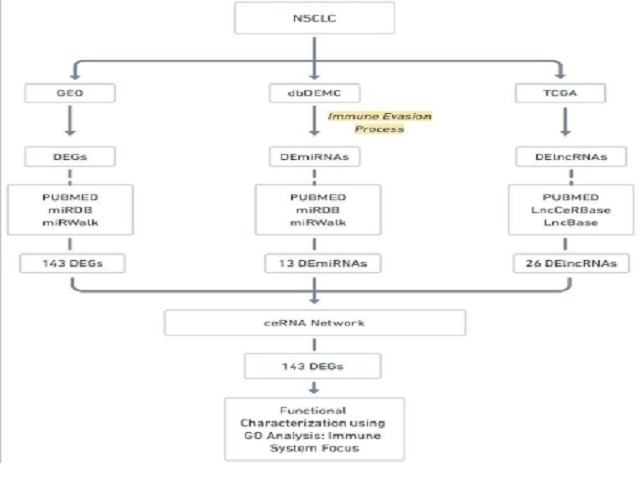Integrated Analysis of Non-Small Cell Lung Cancer Through Competing Endogenous RNA Network and Its Implications in Immune Evasion Regulation
DOI:
https://doi.org/10.5530/ctbp.2024.4s.1Keywords:
NSCLC, ceRNA Network, ALAL-1, Biomarkers, Network BiologyAbstract
Lung cancer is a complex disease integrated with diverse histological and molecular types that have clinical relevance. Non-small cell lung cancer (NSCLC), comprised of adenocarcinoma (LUAD), squamous cell carcinoma (LUSC), and large cell carcinoma (LCC), accounts for the majority of lung cancers. This study harnesses the recent surge in biomarker identification, exploring the promising potential of the competing endogenous RNA (ceRNA) network in deciphering the intricate interplay among lncRNA-miRNA-mRNA components, providing insights into the tumorigenesis of NSCLC. Datasets encompassing differentially expressed mRNA, miRNAs, and lncRNAs were curated from the Gene Expression Omnibus (GEO), Differentially Expressed miRNAs in human Cancers (dbDEMC), and The Cancer Genome Atlas (TCGA) databases. miRNAs were selected with respect to their established roles in immune regulation, pathways, and the tumor microenvironment (TME), and an integrative analysis was performed, based on which a comprehensive ceRNA regulatory network was constructed using Cytoscape software with 26 lncRNAs, 13 miRNAs, and 143 target genes. Gene Ontology (GO)-based functional enrichment analysis focusing specifically on immune system processes uncovered genes in pathways associated with immune cell differentiation, cytokine signaling, the immune response to cancer, and so on, positioning them as potential key biomarkers within the tumor microenvironment. Furthermore, a novel lncRNA, ALAL1, supported by a lone study, was known to bind with the SART3 gene in NSCLC. Simultaneously, another study also established a connection between the SART3 gene and miR-34a. Leveraging these individual interactions, this study revealed a previously unexplored link between ALAL1, SART3, and miR-34a. This plausible ceRNA interaction is suggested to potentially exert a regulatory influence on the progression of NSCLC cells. These computationally inferred interactions, though promising, necessitate rigorous clinical validation. However, the identified biomarkers lay the groundwork for subsequent research, offering valuable insights that can guide future investigations in the realm of NSCLC.



